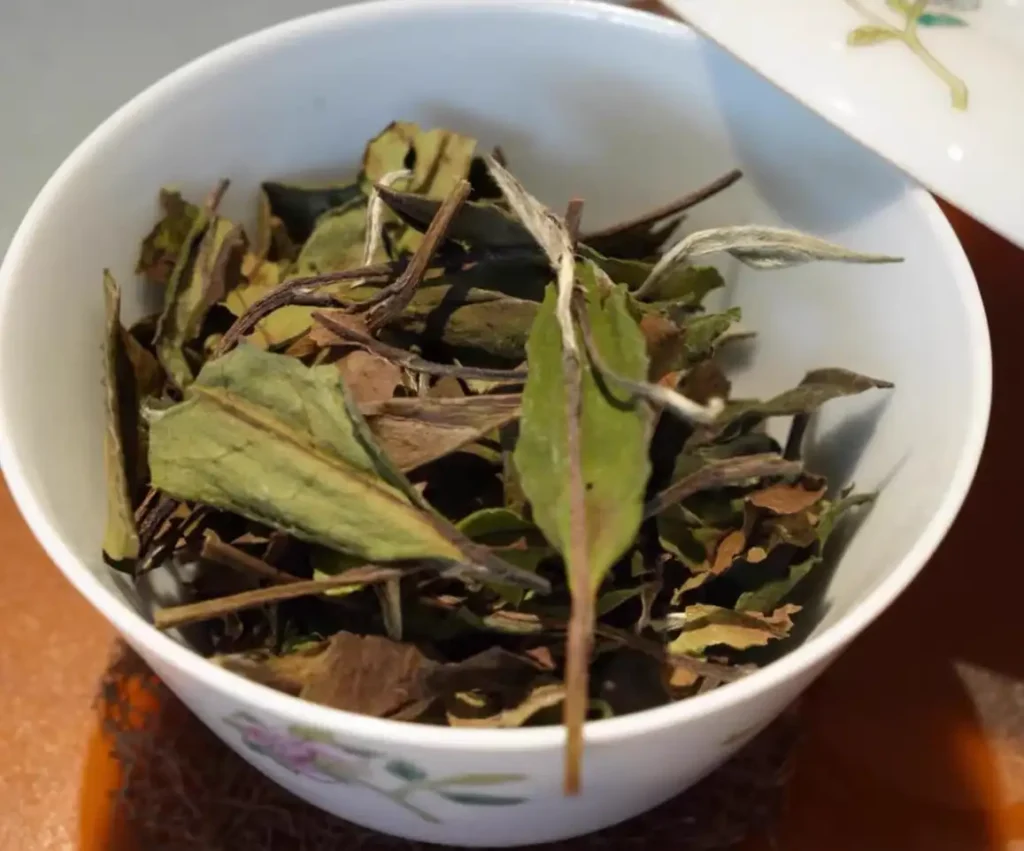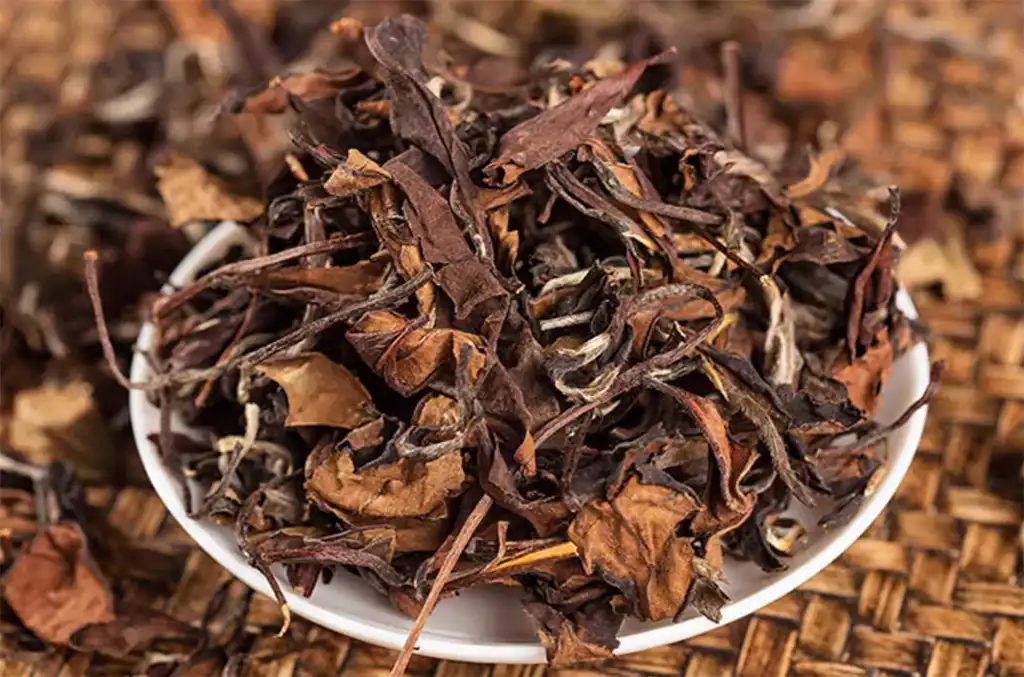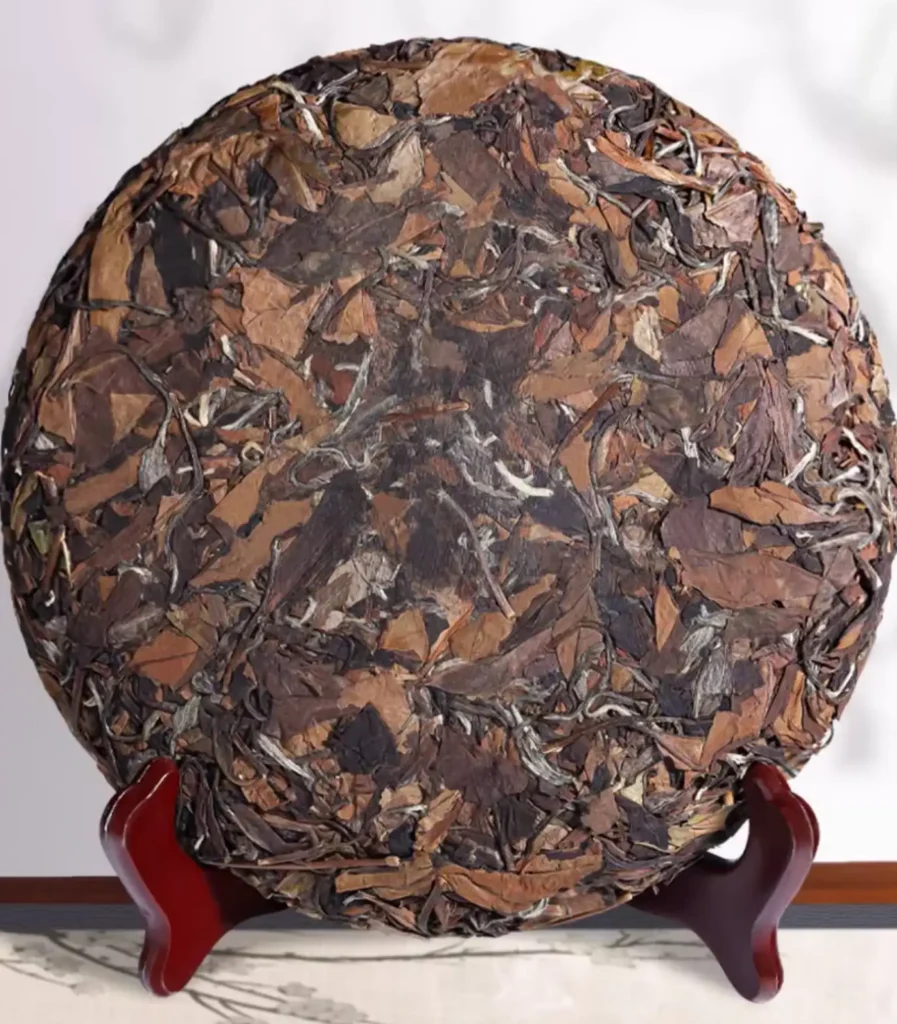Shou Mei Tea, also known as Shou Mei White Tea, is primarily produced in Fujian Province, China, and is classified as one of the grades of white tea. Shou Mei Tea is characterized by its use of more mature leaves, making it one of the higher-yielding categories of white tea. Its name, “Shou Mei,” comes from its appearance, as the tea leaves resemble the eyebrows of an elderly person (with “Shou” meaning longevity in Chinese).

Shou Mei Tea: The Largest Yield and Most Affordable White Tea Grade
Shou Mei Tea’s primary production area is Fujian Province, although it is also produced in Yunnan Province. Harvesting begins in April and continues until October, with spring tea offering the best quality. Shou Mei is made from tea leaves that include one bud and up to four leaves, or from leftover tea shoots from other white teas. When brewed, the tea presents a beautiful appearance with the white buds and green leaves. The white tips resemble the eyebrows of an elderly person, hence the name “Shou Mei.”
Since the harvesting is not restricted to just the buds and allows for the collection of one bud and three or four leaves, and given the longer harvest season, Shou Mei Tea has a higher yield and is more affordable. In its production areas, 500 grams of good-quality Shou Mei can be bought for as little as 10 USD. However, aged Shou Mei that has been stored for several years can sell for over 200 USD.

Shou Mei Tea Production Method
Shou Mei is harvested by picking one bud with three or four leaves. After being laid out to wither, the leaves go through a two-step process: first sun-wilting, followed by indoor withering. The final stage is drying, where the tea is heated in a drying basket until the moisture content reaches around 6%, at which point it is ready for packaging. In addition to traditional loose-leaf forms, many tea factories now produce compressed Shou Mei in the form of tea cakes or tea bricks, which are aged over time and are well-received in the market.

How to Brew Shou Mei Tea
Use water heated to 95°C (203°F). The best water options in order are spring water, well water, or mineral water, and tap water can also be used, but avoid distilled or purified water. The tea-to-water ratio should be about 1:40, meaning 2.5 grams of tea for every 100 ml of water. Since Shou Mei Tea is not rolled, it requires a slightly longer first steeping time of 30–60 seconds, with each subsequent steeping increased by 20 seconds.
